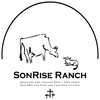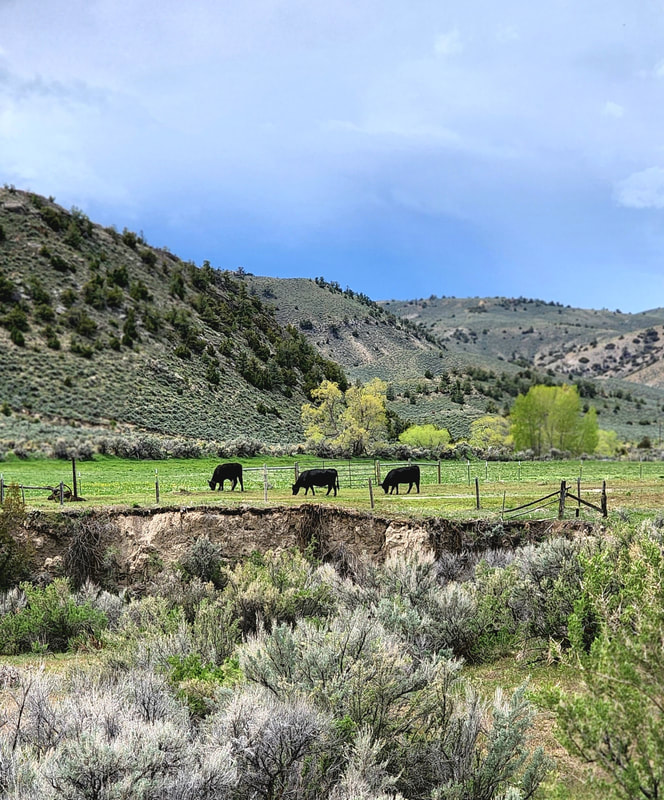I can’t answer that question. If I could, I would probably not be working on 2 miles of barbed wire fence this afternoon. Nope, I’d be a rich man relaxing on a beach in the Tahiti Islands.
But I can share with you some insight into what is occurring, right now in the cattle and beef production world.
So, without further ado, here we go…
First, some basics.
Cattle are raised in America on mostly small, individual farms. Many are grown on long-held family land and raised conventionally using chemical fertilizers and modern agriculture techniques for medical treatment.
Most industrial meat is controlled by four major companies. These companies have contracts with small farms and Ranches agreeing to purchase their calves (the crop of the mother Cows) in exchange for a set price, usually favorable to current market conditions – called “contract raising”.
When the calves are ready, the contract is exercised, and the Gower is out of the picture. The calves are then shipped to a stocking faculty to grow more or sent to feed lots to mature before harvesting.
Some, but not many, retain ownership of the calves as they progress through the feed lot process of growing up in a CAFO, or “Confined Area Feeding Operation” – we’ll not get into that now. For further study on this subject, refer to my other writings in this Blog.
Once the cattle are delivered and / or the contract period is over, the contract is renewed with all associated price adjustments.
In a parallel universe, amounting to a small percentage of all beef production is the “direct market” world of beef. This consists of small Ranchers and businesses that raise their own beef, process it then sell it directly to the end consumer, without the “big four” or any of their facilities. A very small segment of this group is the Grass-fed producers. Even smaller is the Regenerative Ag, Grass fed and finished producers – this last group accounts for approximately 1.8 percent of all beef production in the United Sates.
This is the group we fall into.
When a producer is determining price, he or she must first look at expenses. For the first category mentioned, the contract growers, this is mostly done for them. The “big Four” only pay what they pay, there is very little negotiation.
Other small Ranchers will simply roll the dice and get whatever the auction brings. The prices can be good one year, and horrible the next. It all depends on the supply and demand at the time of sale. Most of these producers have other jobs and Cattle Ranching is just a hobby. As one fellow told me, “I just do it so I can keep my hat and cowboy boots without feeling like a chump”
All Ranchers need to negotiation their selling price by considering the associated the price of fuel, fertilizer, medications, and feed. All of which are skyrocketing now.
This will inevitably drive the retail price of meat up.
With the final group, the Grass-fed & finished Regenerative Agriculture, these costs are not non-existent, simply smaller. We have a neighbor, for example, who purchased 90 tons of hay for the winter for his cows. He grazes continually with no management and feeds hay as necessary in the winter. His expenses for keeping the herd are very high. At $400/ton, his feed bill alone was $36,000.
We, on the other hand, use “stored forage”, by keeping our grass thick all summer long. When the fall arrives, we start our non-Growing season plan, that shows us how much forage we have, still on the ground to feed all winter. From here we adjust our Cow numbers to be sure everyone is fed all winter long and then begin grazing.
Last year we used 2 Tons of hay – my cost $800.
Ivermectin, a pour on treatment for parasites is very expensive. Treating a 200 head herd will run a few thousand dollars. Next year, you'll need the latest version, but never actually beat the bugs because nature always wins against chemicals like Ivermectin. Its just one continuous treadmill of medications.
We use diatomaceous earth. It kills the bug mechanically and they can't outsmart it, like the chemical applications. This plus good management of moving the cows away from their latrine make the partite load almost nil. My cost - $60 buck a year.
So, when it is time to determine my price for sale of beef, I must consider all my expenses, and adjust accordingly. But I am no where near the conventional producer, in terms of input costs. We still have to make adjustments for fuel, wages and other line items, but for the most part, since we are working with nature, not against it, we have lower input costs to our Beef.
We understand that budgeting and planning are a huge part of eating better quality meats. After having a long talk with the family, we decided to offer our Whole Beeves in a 3-pay plan, to help lighten the load of purchasing a Custom Processed Beef from our Ranch.
This means that, just like me, you too can plan for expenses. We’ve taken the large bill of a Whole Beef (near $4k) and are allowing our customers to make a down payment of 1/3 the cost, then paying the balance in two months with completion before delivery.
This way, the customer can get the price per pound benefit of a large, custom beef without having to fork out a large cash payment up front to feed their family over the next few years. It makes good economic sense in these unsettling times. The other added benefit of this is that our loyal customers can “lock in a price” as inflation rages on. By the time the two-year mark hits (the average time a whole beef lasts a family), you’ll be paying a fraction of the retail cost of beef to feed your family - $11 bucks a pound is going to seem like a stellar deal in two years!
Either way, we hope that our ability to harness grass and sunlight transfers into savings for you. After all, We’d rather help you than purchase 90 Tons of Hay…


 RSS Feed
RSS Feed